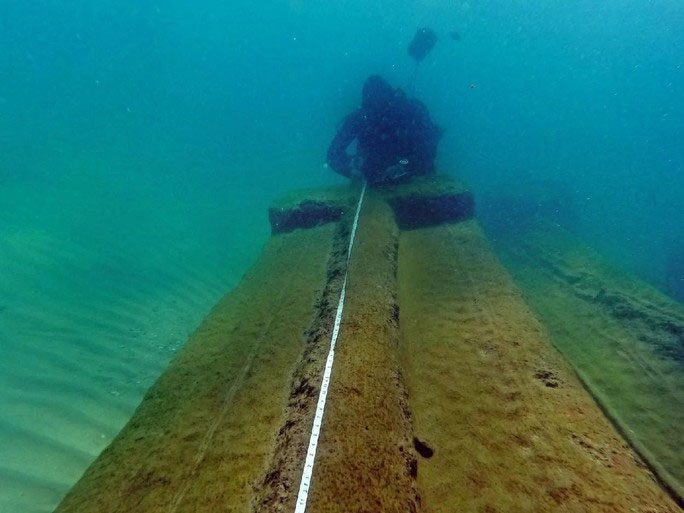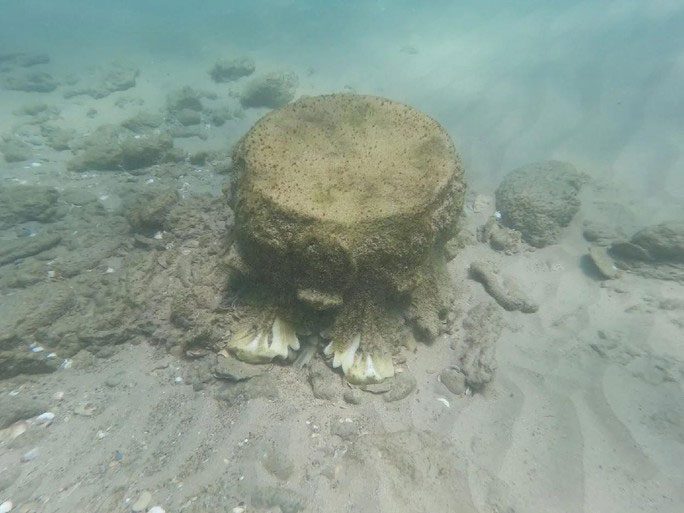The stunning marble columns “manifesting” mysteriously at the bottom of the sea in Israel have helped archaeologists pinpoint the location of a ghost ship they have long been searching for.
According to Heritage Daily, a man named Gideon Harris discovered an intricately decorated column off the coast of Moshav Beit Yanai in central Israel and immediately notified the Israel Antiquities Authority.
An underwater survey was subsequently launched, confirming that the “strange object” is a massive Roman marble column, measuring up to 6 meters in length and ornately decorated.

The marble column being measured underwater – (Photo: ISRAEL ANTIQUITIES AUTHORITY).
However, it does not represent a lost city but rather something even more intriguing: A ghost ship that has been “hiding” at the bottom of the sea for 1,800 years.
According to Koby Sharvit, the director of the underwater archaeology unit at the Israel Antiquities Authority, they had been aware of the existence of a sunken ship laden with cargo for a long time but could not determine its location as the entire wreckage had been buried in sand.
A recent storm inadvertently uncovered the stone column – one of the cargo items aboard the ghost ship – and thanks to the important report from Gideon, they finally located it.
The first-discovered marble column may have been crafted for an important public structure such as a temple or theater.
Preliminary surveys indicate that the ship may have encountered a storm in shallow waters and attempted to anchor but ultimately capsized. Such storms still frequently occur in the area unexpectedly.
The discovery of ghost ships is immensely valuable. Not only is there a wealth of treasure it carried – artifacts of such exquisite craftsmanship dating back nearly 2 millennia are invaluable – but also the historical narrative that the sunken ship holds.

Another detail revealed shows intricate carvings still preserved after nearly 2 millennia – (Photo: ISRAEL ANTIQUITIES AUTHORITY).
The ghost ship may have originated from the Aegean Sea or the Black Sea in Turkey or Greece and was likely headed to one of the ports along the southern coast of the Levant, such as Ashkelon or Gaza, or even Alexandria in Egypt.
This discovery has settled a long-standing debate about whether the Romans constructed architectural details entirely in their homeland or if some elements were imported in part, carved or styled beforehand from the places they came from.
A detailed study will be conducted following the preliminary survey.


















































